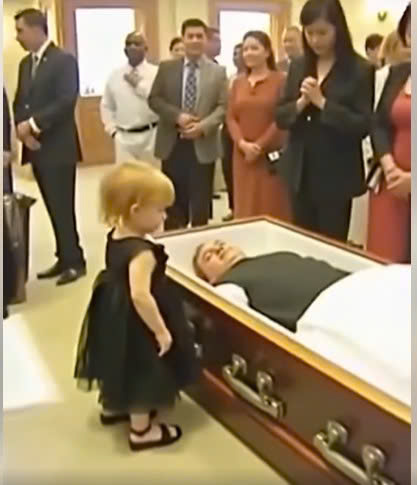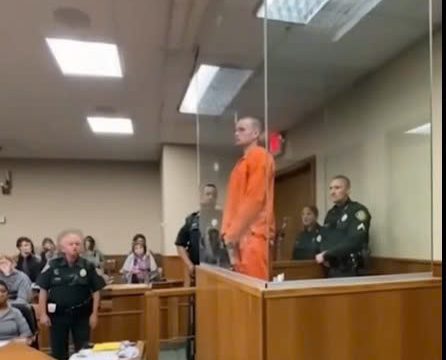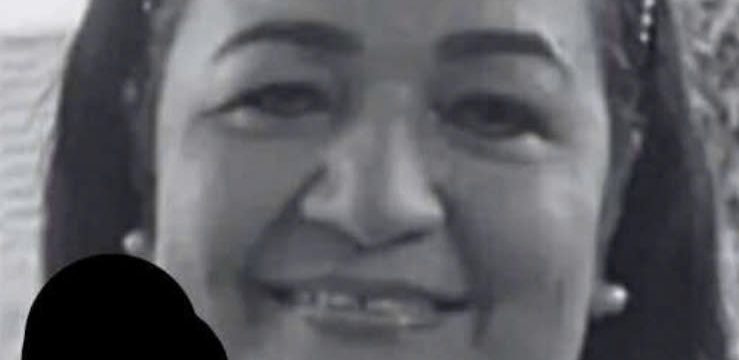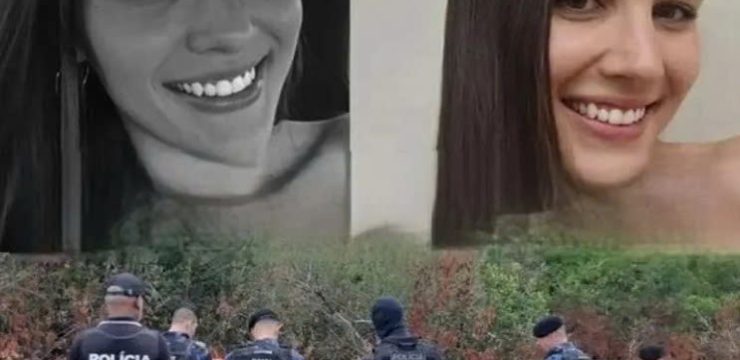It was supposed to be an ordinary farewell, the kind of solemn ceremony that helps loved ones say goodbye and find closure. The chapel was calm and dimly lit, filled with the soft fragrance of lilies and the gentle murmur of whispered prayers. But as soon as seven-year-old Emily entered the room with her mother, something in the air changed. It felt heavy, charged with an energy no one could quite name — as if the walls themselves were holding their breath.

The funeral director, seasoned in loss and emotion, noticed it first. The priest, standing near the altar, paused mid-gesture, sensing a strange undercurrent he couldn’t explain. No one could have predicted what would unfold in the next few minutes — an event so extraordinary that it would blur the line between faith and reality, sorrow and hope.
At the front of the chapel stood the coffin — a polished wooden casket reflecting the faint afternoon light streaming through stained-glass windows. Friends and family filled the pews, their faces solemn, hearts braced for the final goodbye. It was a moment meant for acceptance — but for Emily, it was a moment of belief.
She walked toward the coffin slowly, her small shoes tapping lightly on the marble floor. Her mother tried to hold her back, whispering, “Sweetheart, let’s sit down,” but Emily shook her head. She placed a trembling hand on the lid, her voice barely above a whisper. “Daddy,” she said softly, “please wake up.”
The room went still. People exchanged uneasy glances. Some smiled sadly, thinking it was just a child’s confusion — the innocent hope that her father might simply open his eyes again. Her mother gently knelt beside her, tears streaming down her face. “He’s sleeping now, honey,” she whispered, her voice breaking. But Emily didn’t look away. She leaned closer to the coffin and whispered again, “You’re not gone, Daddy. I know you’re just resting.”
A hush swept over the room. The priest hesitated, his hands gripping the lectern, unsure of what to say. The funeral director stopped mid-step. No one dared breathe too loudly. The child’s words, filled with such conviction, carried something that felt both heartbreaking and oddly powerful.
And then, amid that silence, came the faintest sound — a soft rustle, like fabric shifting or air escaping. It was so subtle that most thought they imagined it. But then it came again, louder this time. The funeral director froze. A murmur ran through the crowd. Emily’s mother gasped. All eyes turned toward the coffin.
The director hesitated, then slowly reached forward and lifted the lid — and what they saw made every heart stop. The man inside blinked. His chest rose as he took a shaky breath, his eyes fluttering open. For a brief moment, confusion washed over his face, and then his gaze fell upon Emily. “Daddy,” she cried, her small voice cracking with joy.
Tears erupted across the room. The mother screamed, not in fear, but disbelief and gratitude. The priest began to pray aloud, his voice trembling. The father, pale but alive, reached for his daughter’s hand, his lips trembling as if to speak. Emily climbed into his arms, crying and laughing all at once. The crowd, once filled with grief, now overflowed with joy, relief, and awe.
No one could fully process what had just happened. The doctors had declared him gone. The family had accepted it. Yet here he was — alive, breathing, embracing the child whose faith had refused to surrender. The impossible had just become real.
Word of the event spread quickly beyond the chapel walls. By evening, local news outlets were reporting what witnesses described as a “miraculous recovery.” Medical experts later speculated it might have been a rare medical condition in which vital signs temporarily drop to undetectable levels. But for those who were there, no scientific explanation felt adequate. What they had seen defied everything they thought they knew about life and death.
Religious leaders called it a sign of divine grace, a moment meant to restore faith in the unseen. Others saw it as a profound reminder of how love can cross even the deepest divides. Psychologists later remarked on the child’s unwavering belief, suggesting that Emily’s emotional bond with her father might have played a powerful role in keeping that connection alive, even in the face of despair.
For the family, life after that day took on an entirely new meaning. Every sunrise felt sacred. Every meal shared, every laugh, every small act of kindness became a gift to be cherished. Emily’s father recovered slowly but steadily, his doctors calling his survival “nothing short of remarkable.” He often said later that the last thing he remembered was hearing his daughter’s voice calling to him through the dark — a sound that somehow pulled him back.
Weeks later, the family returned to the chapel, not for mourning, but thanksgiving. The same priest who had prepared to deliver a eulogy now led a prayer of gratitude. The once somber room was now filled with light and laughter. The funeral director, still humbled by the experience, admitted that it had changed the way he viewed his work. “I’ve seen hundreds of goodbyes,” he said, “but that day reminded me that sometimes, goodbye isn’t the final word.”
As the story spread, it touched hearts far beyond their small community. People shared it across the world, not as a tale of mystery, but as a message of hope. It became a reminder that miracles don’t always follow rules or expectations — sometimes, they arrive quietly, when one small voice dares to believe.
That evening, as the sun dipped below the horizon, Emily and her parents walked hand in hand, leaving the chapel together. The little girl’s faith had not only brought her family peace — it had transformed grief into gratitude, despair into wonder. Skeptics could argue and scientists could analyze, but for those who were there, no explanation was needed. They had witnessed something beyond reason — the power of love, faith, and the fragile, beautiful miracle of life itself.





